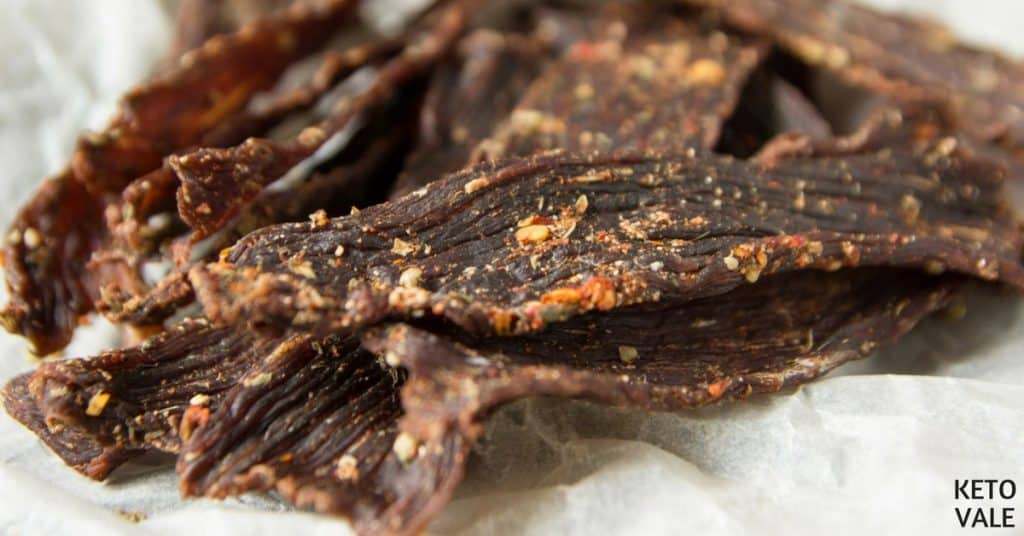Homemade beef jerky is one of our favorite keto snacks! It’s simply so delicious! The problem? Store-bought jerky usually has a lot of added sugar, which makes it not keto-friendly, unless you know where to find sugar-free beef jerky brands.
Today I will show you how to make a basic keto-friendly beef jerky from home.
At first glance, this keto beef jerky recipe might look complicated and something that only molecular gastronomy chefs could make. But with a little hope from you and our support, it will turn into a great keto snack or side dish that can remain in your fridge for a while. It will always come in handy while cooking and decorating other ketogenic recipes.
The key to this sugar free beef jerky recipe is quality beef meat and, of course, your patience when working with a dehydrator.
For about 4 hours, you should keep checking in with those meat strips because some may dry faster than others. Plus, depending on the type of meat, the result may be a little different every time.
Our homemade jerky marinade with a base of vinegar, garlic, and paprika is the classic version. It’s what most jerky from the store is marinated with.
Of course, you’re welcome to experiment with this marinade, changing propositions and adding new seasoning, to create a completely new marinade, or maybe you have your signature marinade that you use for summer BBQs.
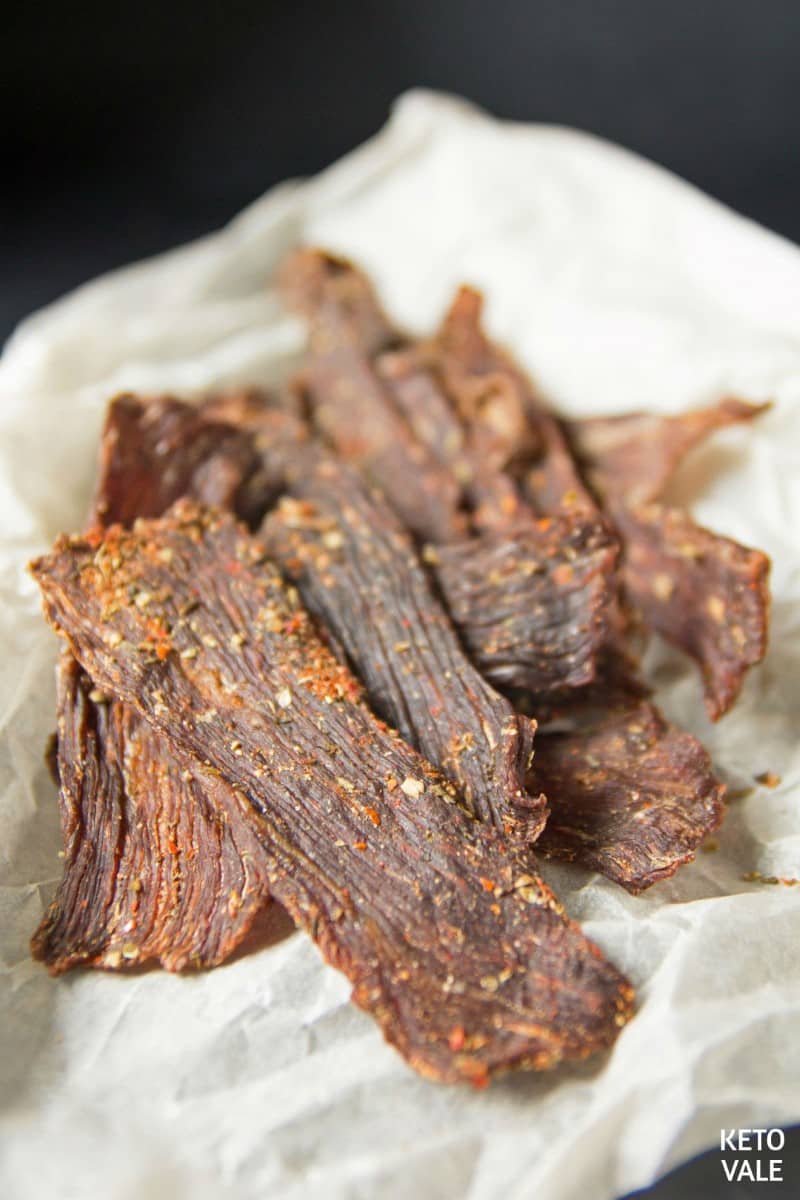
You can also add some keto-friendly sugar substitutes if you like it to taste a bit sweet as the store-bought products. You can use erythritol, monk fruit, or stevia. However, most people find that the vinegar is all you need to sweeten the meat!
Vinegar does not raise your blood sugar levels like normal sugar does. In fact, research shows that vinegar can be beneficial for people with type 2 diabetes.
One study found that taking vinegar at bedtime helps moderate waking glucose concentrations in people with type 2 diabetes (1). This is because acetic acid, the active ingredient in vinegar, has an antiglycemic effect.
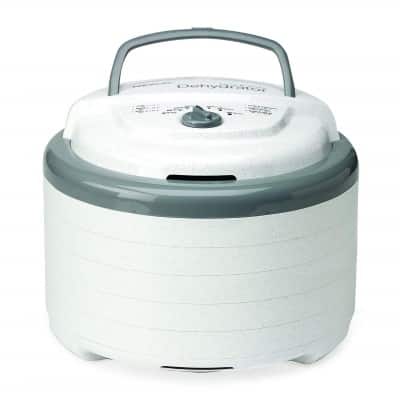
Looking for a good beef jerky dehydrator for this low carb beef jerky recipe? Try this Nesco Food Dehydrator!
How to Make Keto Beef Jerky That Is Low Carb and Sugar Free
Slice the beef against the grain into medium-size strips. You should use lean beef for this, such as round steak or flank steak.
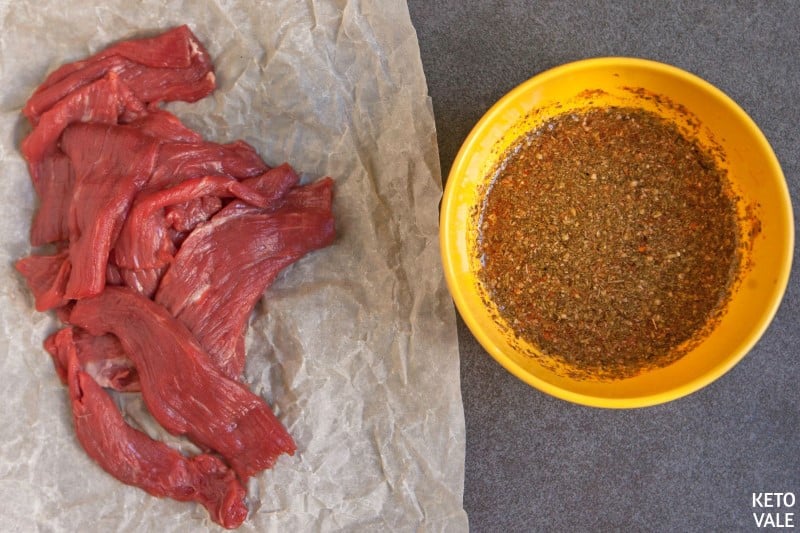
Add all marinade ingredients in a bowl and mix well. You can add a little bit of coconut aminos or soy sauce to enhance the flavor, then transfer the meat slices into a ziplock bag and mix well. Chill it in the fridge for at least 6 hours to make sure the marinade is well-absorbed into the beef slices.
Remove the meat after marinating and drain the liquid.
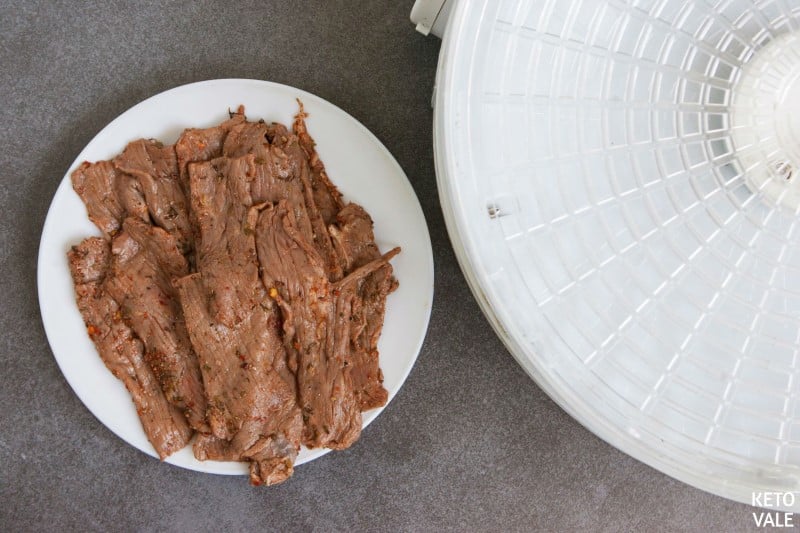
Place each meat slice on the dehydrator racks and make sure they don’t overlap each other.
Dry for 4 hours at 160F-170F. Once done, turn the dehydrator off but still leave the meat on the racks for 1-2 hours to cool.
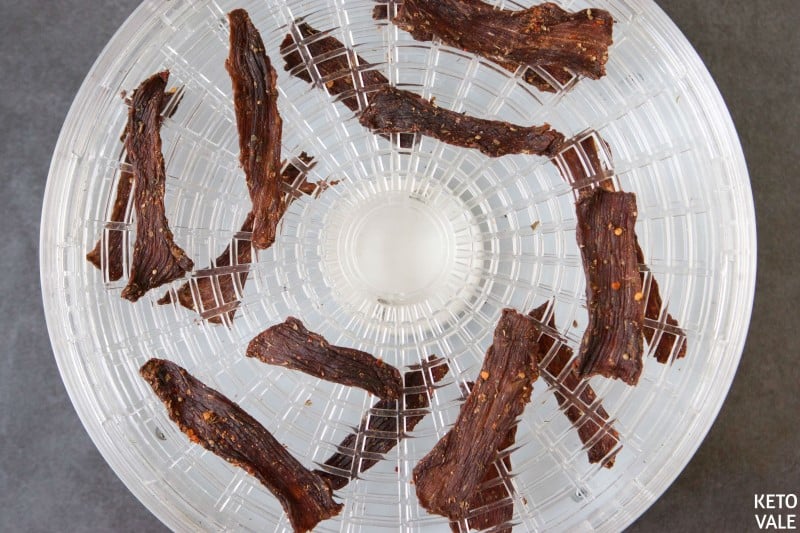
Store in a ziplock bag for up to 10 days to serve!
Save this recipe by pinning this picture to your Pinterest board for later use!
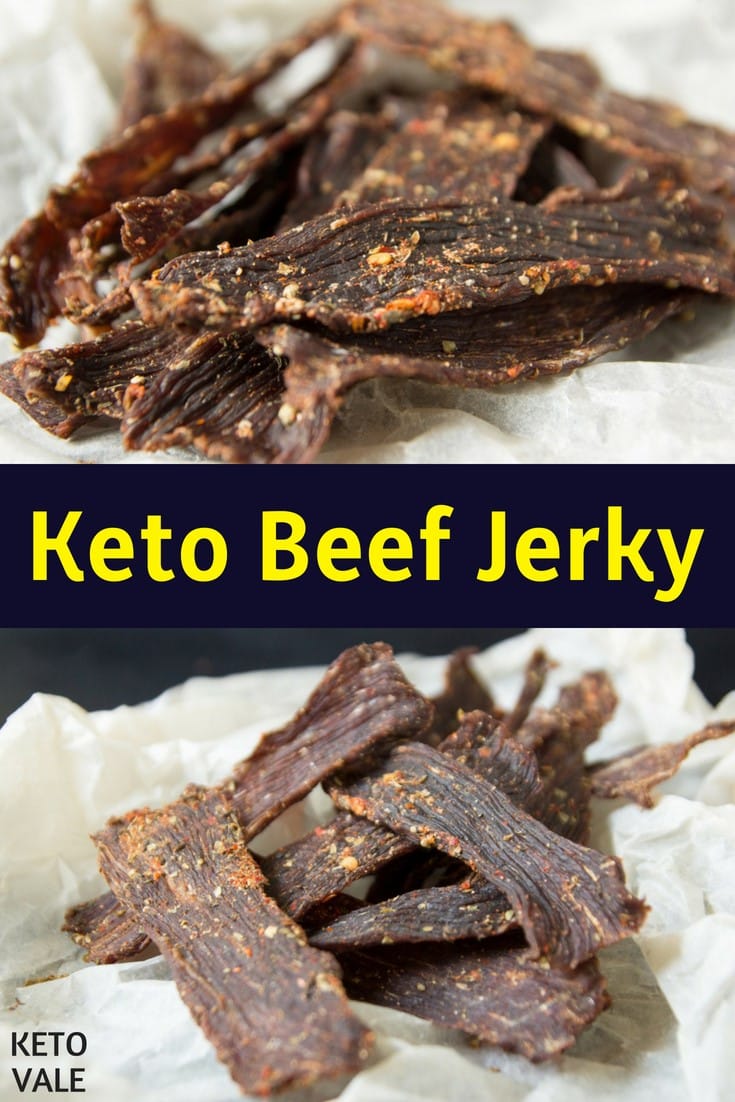
Related:
Keto Cajun Beef Jerky Recipe
Ingredients
- 10 oz lean beef such as round steak
For marinade
- 1/4 cup apple cider vinegar
- 1/3 cup Cold Water
- 2/3 tsp oregano
- 1/2 tsp garlic powder or onion powder
- 2/3 tsp thyme
- 1 tsp cayenne pepper
- 1/2 tsp sweet paprika
- 1/2 tsp smoked paprika
- 1/4 tsp red pepper flakes
- 1/2 tsp Salt and black pepper
Instructions
- Slice the meat into medium-size stripes against the grain.
- In a small bowl, mix all marinade ingredients and transfer the mixture to a ziplock bag.
- Add the beef stripes and shake well. Put the bag with beef in the fridge and marinate for 6-24 hours.
- Drain the beef after marinating.
- Put the meat on the dehydrator racks and make sure the stripes don’t touch each other.
- Dry on 160F – 170F for 4 hours. Then turn the dehydrator off, but leave the stripes on the racks to cool for a few hours.
- Store in a ziplock bag for 8-11 days.
Video
Nutrition/Macros
FAQ and Cooking Tips
Is beef jerky good for ketosis?
Beef jerky can be suitable for ketosis, but it’s essential to choose varieties without added sugars or high-carb ingredients. Always check the nutrition label to ensure it aligns with your keto dietary goals.
What is the best meat for homemade beef jerky?
The best meat for homemade beef jerky is lean cuts like eye of round, top round, or sirloin tip. These cuts provide a good texture and flavor while minimizing excess fat, which can become rancid during the drying process.
Why add vinegar to beef jerky?
Adding vinegar to beef jerky serves as a marinade component that helps tenderize the meat and impart flavor. Additionally, vinegar’s acidic nature can inhibit the growth of harmful bacteria during the drying process, enhancing the jerky’s safety and shelf life.
What is the white stuff on my homemade jerky?
The white stuff on homemade jerky is often salt or mineral deposits that form during the drying process. It’s not mold, but rather a result of the meat’s natural salts and minerals coming to the surface as moisture is removed. While it’s generally safe to consume, it’s always a good idea to inspect jerky for any signs of spoilage or mold.
Why is my homemade beef jerky so tough?
Homemade beef jerky can become tough due to over-drying, slicing the meat with the grain, or using a cut with too much connective tissue. Proper marination, slicing against the grain, and monitoring the drying process can help achieve a more tender result.
